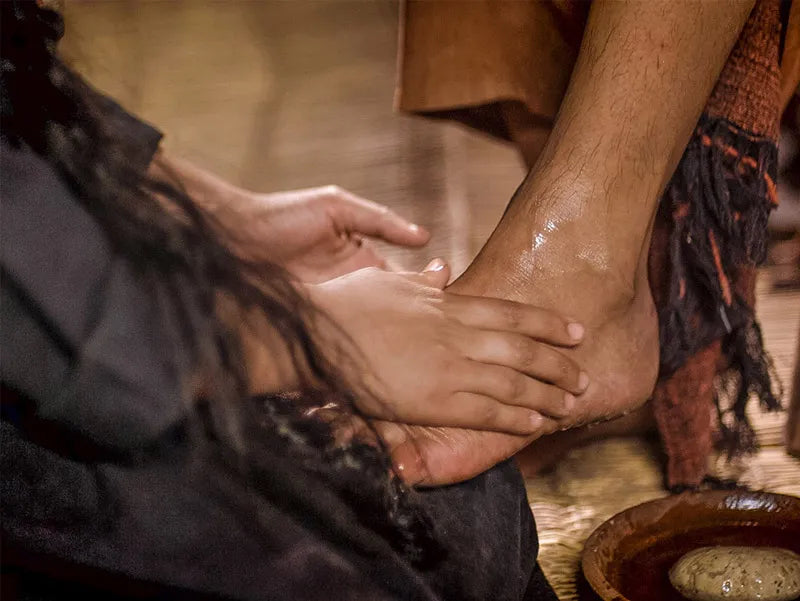
Anointing of the Sick: Is it Biblical?
Anointing of the Sick is a biblically-based ceremony performed by certain Christian denominations for those who are ill, elderly, or about to undergo surgery. In the ceremony, God is petitioned for the person's spiritual and physical healing through the Holy Spirit, as well as to bind the individual with the suffering of Christ.
The Anointing of the Sick is most commonly associated with the Roman Catholic Church, and as such, this article examines the rite from the perspective of the Catholic faith. Catholics consider the Anointing of the Sick a sacrament that emphasizes the presence of Christ and the forgiveness of sins.
Anointing - What Does It Mean?
A majority of anointings in the Bible involved the application of olive oil or ointments to a person or object for secular or sacred purposes. The use of olive oil for anointing was common in Biblical times, and having sufficient olive oil to use was a sign of prosperity and blessing (2 Kings 20:13 ESV; Joel 2:19). Furthermore, Scripture notes that some anointings took place spiritually through the infusion of the Holy Spirit.
1. Anointing with oil was commonplace in Biblical times, when people and objects were anointed for secular purposes. Jews, for example, showed hospitality to their guests by anointing their heads with oil (Luke 7:46; Psalm 23:5). In addition, Jews anointed their heads and bodies with oil to smooth and refresh their hair and skin (Ruth 3:3; Psalm 104:15). The Bible also tells us that in times of war, soldiers prepared their shields by smearing oil on the shield's leather to prevent the leather from cracking, which makes the shield more effective in battle (Isaiah 21:5).
2. Oil was also used for medicinal anointings to heal the sick and soothe the wounds of the injured. The prophet Isaiah, for example, mentioned olive oil's therapeutic qualities in his writings (Isaiah 1:6), and the Good Samaritan mixed olive oil with wine to dress the wounds of the man who fell into the hands of robbers (Luke 10:34). St. James also recommends anointing the sick with oil to assist them in recovering from their infirmity and to confer forgiveness of sins upon them (James 5:14-15). Furthermore, the Bible indicates that the Twelve Apostles healed many sick people in their day by anointing them with oil (Mark 6:13).
3. In Biblical times, anointing with oil was also customary for religious reasons. Anointing in a theological context refers to smearing or pouring oil over a person or object in order to set it apart for divine use. Prophets, priests, and kings were anointed with oil as a sign of their divine appointment to God's service (1 Kings 19:16; Exodus 29:21; 1 Samuel 16:13). In religious rituals, fragrant oils were also used to prepare the dead for burial (Mark 14:8; John 19:39-40).
Oil was also used to set apart objects for religious use in a similar manner. According to Scripture, objects anointed with oil included the Ark of the Covenant, the Tabernacle, altars, lamp-stands, and pillars (Exodus 30:25-29; Genesis 28:18)
4. A religious anointing with the Holy Spirit: Scripture also declares that people may be anointed with the Holy Spirit. A prominent example of this is, of course, Jesus, who was anointed with the Holy Spirit and power (John 1:32-42; Acts 10:38).
The purpose of anointing the sick
It is God's promise to heal His faithful, and the sick are anointed since they are petitioning Him to heal them, if it is in His will (Exodus 15:26).
The Scriptures give examples of God working through ordinary people to heal the sick by anointing them with oil, laying hands on them, and praying for them (James 5:14-15; Mark 6:13). Catholics request the sacrament of the Anointing of the Sick to ask for a similar healing today. The person who requests the anointing must either be gravely ill, frail due to advanced age, or undergoing major surgery (Catechism of the Catholic Church, 1514-1515).
Catholics believe that, during the Anointing of the Sick, Jesus Himself spiritually heals the sick or frail person from their sins and, if it is God's will, also from their physical or psychological illness (CCC 1504, 1512). Catholics believe that even if physical healing is not possible, the main purpose of the anointing is to give the recipient spiritual strength, peace, and courage to bear the suffering associated with the affliction (CCC 1520).
Anointing the sick: The Process and Prayer
The Anointing of the Sick can take place at home with relatives present, in a hospital with relatives or hospital staff present, or in a church with only the sick person present or a group of sick people and their families. Even if other members of the faith community are not present, the presence of others may assist in reassuring an infirm person that Jesus' body, the church, is present in prayer.
Anointing of the Sick usually involves the following steps:
1. The sprinkling of holy water on the recipient and those present at the sacrament
2. The introductory prayers may include a brief penitential rite if the person to be anointed has not already received the Sacrament of Reconciliation (commonly referred to as confession) prior to the anointing (John 20:19-23)
3. Holy Scripture readings
4. A priest anoints the forehead and hands of a sick person with holy oil in order to invoke the presence of the Holy Spirit on the sick person (Mark 6:13; CCC 1513). During the anointing, the priest recite the following prayer:
Through this holy anointing may the Lord in His love and mercy help you with the grace of the Holy Spirit. May the Lord who frees you from sin save you and raise you up (James 5:14-15; CCC 1513).
5. Recitation of the Lord's Prayer (Matthew 6:9-13)
6. Communion should be administered to the infirm person if they are able to receive the Eucharist (John 6:54)
7. A blessing is included in the dismissal
Moreover, if the sick person who received the anointing recovers and falls ill again at a later time, he may receive the sacrament again (CCC 1515).
Does the same process apply to last rites?
Anointing of the Sick differs from Last Rites in that a person does not need to be dying to receive this sacrament. A person who is at the point of death may be anointed with the Anointing of the Sick in conjunction with Last Rites.
As part of last rites, a dying person is administered the Anointing of the Sick, Penance, and Holy Communion. At the Last Rites, special emphasis is placed on the dying person's final reception of the Holy Eucharist. Therefore, Holy Communion not only nourishes the recipient during his earthly life, but it also prepares him for his transition into his eternal life.
Due to this reason, Holy Communion, which is given to those near death, is called Viaticum, which means "provision for a journey" in Latin.
The Anointing of the Sick in Other Christian Religions
Both the Eastern Orthodox and Anglican churches consider the Anointing of the Sick a sacrament. Some Christian denominations, like the Lutheran and Methodist churches, don't consider anointing the sick a sacrament, but they do have anointing ceremonies, which vary from church to church.
A growing number of Protestant denominations have adopted anointing with oil as part of their healing services.
Anointing of the Sick: What Christians Should Remember
Anointing of the Sick is rooted in St. James' command to anoint the sick with oil to bring about healing and forgiveness (James 5:14-15). The purpose of the rite is to unite the recipient with Christ's suffering by appealing to the Holy Spirit to imbue the sick and the elderly with strength, peace, and courage to endure their illness or old age in Jesus' name.
A key aspect of the sacrament is that it acknowledges that God's plan may or may not include healing from our physical infirmities. The Anointing of the Sick does not take the place of seeking medical attention. Through the ceremony, the sick person is offered spiritual healing by being prayed over, anointed with holy oil, united to the Lord's healing presence, and forgiven for prior sins.


Leave a comment
This site is protected by hCaptcha and the hCaptcha Privacy Policy and Terms of Service apply.